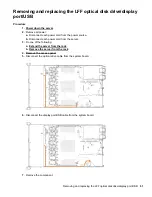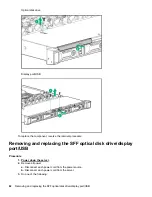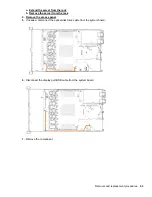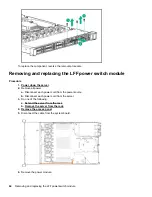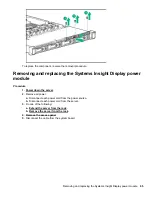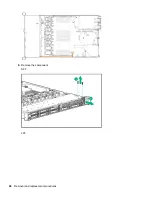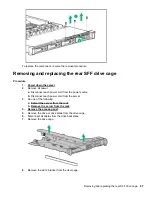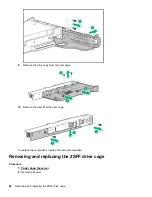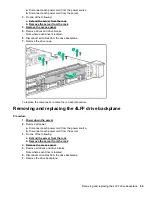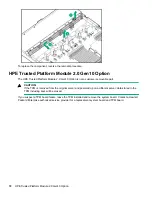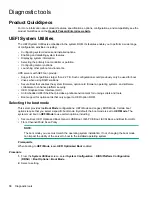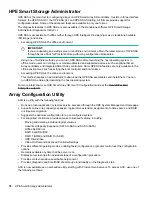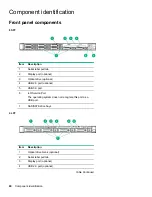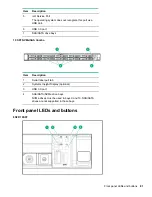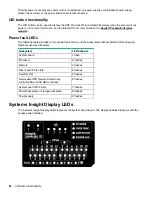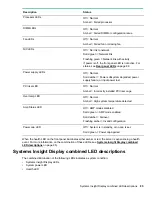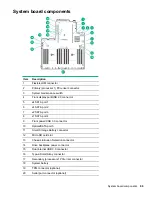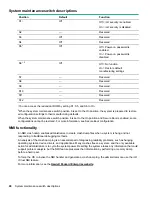
•
UEFI Mode
(default)—Configures the system to boot to a UEFI compatible operating system.
•
Legacy BIOS Mode
—Configures the system to boot to a traditional operating system in Legacy BIOS
compatibility mode.
3.
Save your setting.
4.
Reboot the server.
Secure Boot
Secure Boot is a server security feature that is implemented in the BIOS and does not require special
hardware. Secure Boot ensures that each component launched during the boot process is digitally signed and
that the signature is validated against a set of trusted certificates embedded in the UEFI BIOS. Secure Boot
validates the software identity of the following components in the boot process:
• UEFI drivers loaded from PCIe cards
• UEFI drivers loaded from mass storage devices
• Pre-boot UEFI shell applications
• OS UEFI boot loaders
When Secure Boot is enabled:
• Firmware components and operating systems with boot loaders must have an appropriate digital signature
to execute during the boot process.
• Operating systems must support Secure Boot and have an EFI boot loader signed with one of the
authorized keys to boot. For more information about supported operating systems, see the UEFI System
Utilities and Shell Release Notes on the Hewlett Packard Enterprise website (
You can customize the certificates embedded in the UEFI BIOS by adding or removing your own certificates,
either from a management console directly attached to the server, or by remotely connecting to the server
using the iLO Remote Console.
You can configure Secure Boot:
• Using the
System Utilities
options described in the following sections.
• The RESTful API. For more information, see the Hewlett Packard Enterprise website (
• Using the RESTful API to clear and restore certificates. For more information, see the Hewlett Packard
Enterprise website (
www.hpe.com/support/restfulinterface/docs
• Using the
secboot
command in the Embedded UEFI Shell to display Secure Boot databases, keys, and
security reports.
Launching the Embedded UEFI Shell
Use the
Embedded UEFI Shell
option to launch the Embedded UEFI Shell. The Embedded UEFI Shell is a
pre-boot command-line environment for scripting and running UEFI applications, including UEFI boot loaders.
The Shell also provides CLI-based commands you can use to obtain system information, and to configure and
update the system BIOS.
Prerequisites
•
Boot Mode
is set to
UEFI Mode
.
•
Embedded UEFI Shell
is set to enabled.
Procedure
1.
From the
System Utilities
screen, select
Embedded Applications
>
Embedded UEFI Shell
.
The
Embedded UEFI Shell
screen appears.
2.
Press any key to acknowledge that you are physically present.
Secure Boot
75
Summary of Contents for ProLiant DL360 Gen10
Page 27: ...Customer self repair 27 ...
Page 28: ...28 Customer self repair ...
Page 29: ...Customer self repair 29 ...
Page 30: ...30 Customer self repair ...
Page 35: ...Removing and replacing the bezel Removing and replacing the bezel 35 ...
Page 66: ...6 Remove the component SFF LFF 66 Removal and replacement procedures ...

